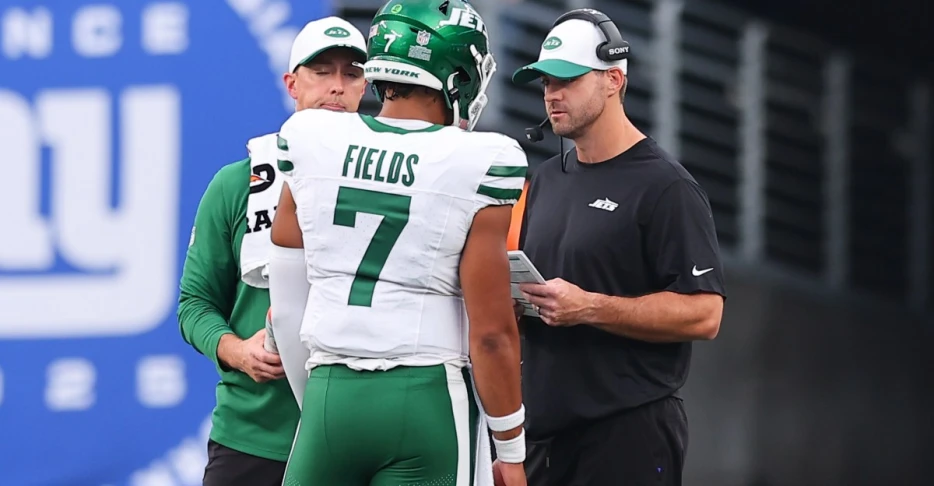
 Gang Green Nation
Gang Green Nation
I think it can be tempting to excuse the offensive coordinator when the quarterback looks lost. In truth, it can’t be easy to call plays for a quarterback like Justin Fields when the fifth year quarterback looks as hopeless has he has lately.
But I don’t think evaluating coaching is purely about end results. It can question of whether a coach is maximizing his team’s odds of success.
Six years ago Sam Darnold’s bout with mono and Trevor Siemian’s broken ankle forced the Jets to start waiver wire claim Luke Falk at quarterback. Falk wasn’t a quarterback who could execute on an NFL level. You couldn’t blame Adam Gase for the Jets losing or struggling on offense with him as the signal caller.
Still, as I wrote at the time, it was clear that the coaching staff wasn’t doing everything in its power to help Falk succeed. Had the Jets coaches given Falk a bunch of concepts that help a quarterback against man to man coverage in that game against the man-to-man heavy Patriots, the blame would have fallen completely on the quarterback. They didn’t.
Gase might not have been at fault for Falk’s lack of ability, but he deserved criticism. He clearly wasn’t designing an offense that could maximize whatever scraps of talent Falk had.
Things brings me to Jets offensive coordinator Tanner Engstrand.
I’ll be honest with you. Up until this week, I had the mindset that Engstrand was in an impossible situation. How can you blame him for a quarterback who looks as lost as Justin Fields? Engstrand received rave reviews for the Jets’ season opener against the Steelers when the offense put up 32 points. Reviewing the game, I honestly didn’t see anything all that special about the game planning or play calling. I just thought the players executed well. After that opener, the players executed less well. It is a players’ league after all. Overnight it seems like coaches can suddenly look much better or much worse if the talent level on their roster changes.
The last few days, however, I’ve zoomed out a bit and looked at some tendencies in the Jets offense. What I found just doesn’t make a lot of sense to me.
Even Justin Fields’ biggest fan would probably admit that he is not a natural pocket passer at this point in his career. He is a quarterback for whom you’d like to limit traditional dropbacks.
One would think that this would call for a heavy diet of play action and run-pass options. These concepts both lead to simpler reads in the passing game. Play action manipulates defenders to bite on run fakes, opening large passing windows. There also tend to be less receivers out on routes, which simplifies the quarterback’s decision-making. Run-pass options generally ask the quarterback to read one defender to make a decision rather than scanning the entire (or half) the field.
With that in mind, I took a look some numbers. Pro Football Reference’s advanced stats [list...